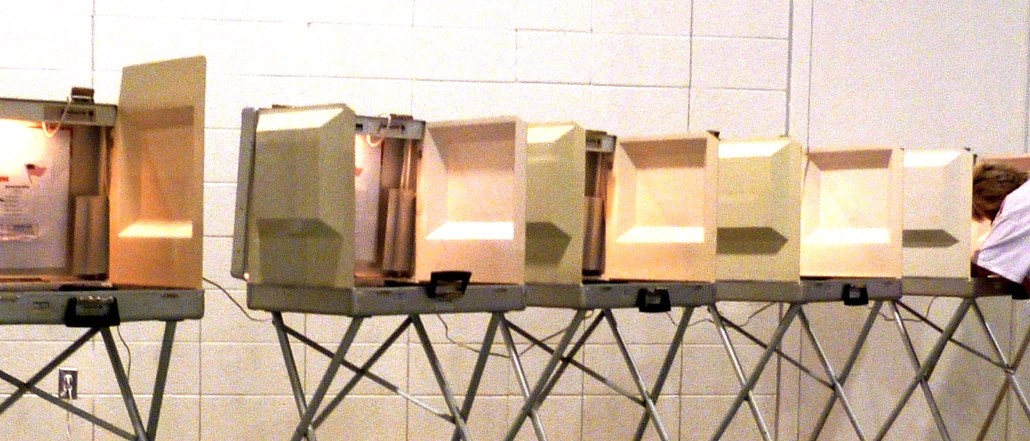Save 50% on a 3-month Digiday+ membership. Ends Dec 5.

With their election hangover looming, publishers are looking to wrap this race with an experimental bang. In addition to the live blogging and relentless social updates that have become de rigueur over the past two election seasons, publishers large and small are debuting new products designed to hold readers’ attention as the votes roll in.
Some are just small tests of things that will come in handy a few times a year. Others could wind up becoming integral to the way these publishers connect with their readers.
Here’s a look at who’s doing what:
The Washington Post’s Live Email
Email newsletters have become a new laboratory for publishers recently, and on election night, the Washington Post will be trying out a geo-targeted newsletter with content that will differ depending on when readers open it. It will feature two maps, including a national one with data on where each state stands in the presidential race and a second one of the state where the recipient lives, complete with county-by-county data on local contests (International readers won’t get a state map). In addition to those, the newsletter will have a mix of stories written by Post reporters and by Heliograph, an in-house tool that writes stories based on the latest election results data. “We’re kind of in uncharted territory,” said Tessa Muggeridge, the Post’s newsletter and alerts editor, adding that she thinks this technology’s potential could be applied across many of the Post’s dozens of newsletters. “We see a lot of potential for incorporating live stuff into our other newsletters,” she said.
The Huffington Post’s polling place video player
Under its new head of product, Julia Beizer, HuffPo has rolled out tons of election-flavored goodies, including an iMessage game called Swing Votes and a Twitter-focused data project called We the Tweeple. And in the run-up to the election, it’s gotten its video player in on the act by adding a tool that helps readers figure out where their polling place is.
While it’s too early to tell how the video player tweak will perform, Beizer and her team have already seen good returns from some of these projects. “Events like the election are great testing grounds for us because we know our audience is passionate about and interested in it,” Beizer said. “It’s a huge opportunity to try new story forms to see if they click, particularly on mobile.”
CNN’s Kikbot
CNN prides itself on getting onto a platform quickly, then quickly evolving to get its presence right. On Tuesday, its Kikbot, which it has already used as a kind of Rio tour guide during the Olympics, will play a very different role, serving up real time election results, Trump- and Clinton-themed stickers, GIFs created from moments that happen on CNN’s broadcast, and news on demand.
Ad position: web_incontent_pos1
This shift reflects the difference between one big night and one monthlong event. But it’s also part of a broader strategic plan to effectively distribute pieces of its broadcast content to audiences everywhere. “For us, it is about creating a news habit in every generation on every platform,” CNN’s head of social media, Samantha Barry, told Ad Age.
The Hill 360
Publishers have been looking for ways to give audiences the most visceral experiences possible. And The Hill, which took its first stab at that with Snapchat, will debut a 360-degree video series designed to put viewers on the ground at the campaign rallies. A team of four shooters, spread out across both Trump and Clinton’s campaigns and across New York City, will look to put out between 15 and 20 videos during election night. They will be short, ranging from 90 seconds to about two minutes, and they are meant to put people on the ground. “Our goal is to provide an immersive, inside look at the political process,” said Taylor Lorenz, The Hill’s director of emerging platforms.
Photo by Rusty Clark, via Creative Commons.
More in Media

Digiday+ Research Subscription Index 2025: Subscription strategies from Bloomberg, The New York Times, Vox and others
Digiday’s third annual Subscription Index examines and measures publishers’ subscription strategies to identify common approaches and key tactics among Bloomberg, The New York Times, Vox and others.

From lawsuits to lobbying: How publishers are fighting AI
We may be closing out 2025, but publishers aren’t retreating from the battle of AI search — some are escalating it, and they expect the fight to stretch deep into 2026.

Media Briefing: Publishers turn to vertical video to compete with creators and grow ad revenue in 2026
Publishers add vertical video feeds to their sites to boost engagement, attract video ad spend and compete with news creators.
Ad position: web_bfu